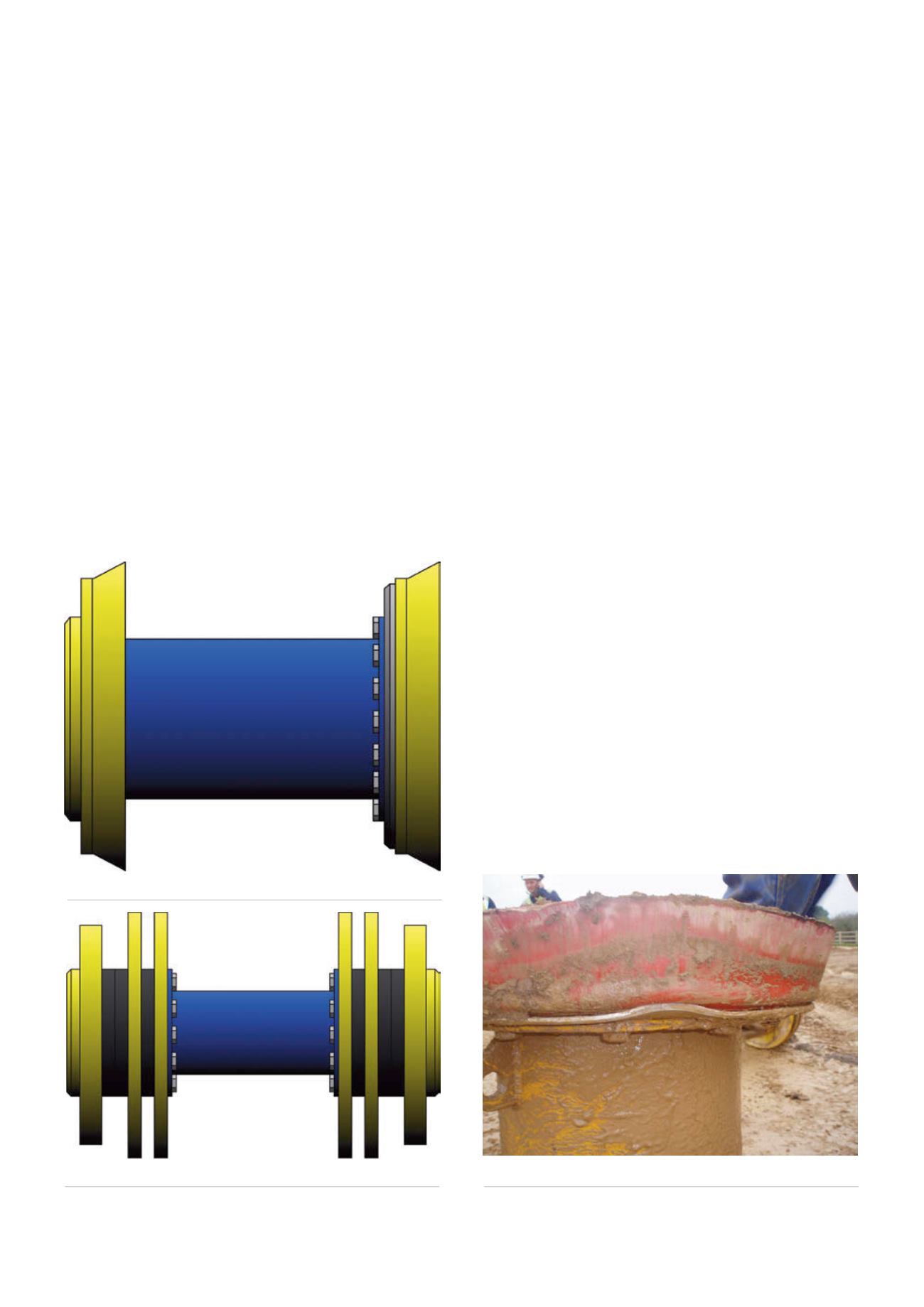
The UK Environment Agency (SEPA Scotland) requires
abstraction and disposal licences for volumes exceeding
100 m
3
/d. Intention to abstract water will require notification
to the public through the media up to six months prior to
abstraction. Detail is required by the EA of water volumes,
flowrates, method of measurement, locations for and
total quantities for abstraction and return. Restrictions
on abstraction due to low river flows can have adverse
consequences to a project if pre-commissioning is delayed.
It is therefore important to assess early the requirements for
hydrotesting and impact to the construction programme.
From the hydrotest plan, equipment required to undertake
the works can be sourced. Supply pumps, water storage
capacity, flooding pumps, number of compressors etc, with
the required operating parameters will all be identified from
the plan.
Operations for each individual test section will generally
consist of the following:
)
Cleaning or swabbing – to remove construction debris and
prove piggability.
)
Gauging – to prove the internal bore of the pipeline is free
from dents and buckles.
)
Flooding – filling the section with water in preparation for
hydrotest.
)
Hydrotesting – to prove the structural integrity of the
pipeline section.
)
Dewatering – post hydrotest removal of water.
Cleaning
Swabbing is the first pigging operation to be undertaken on a
newly constructed pipeline section to remove construction
debris and prove the ‘piggability’ of the section. The initial
swab run should always be carried out using a hi-seal
bi-directional pig. The pig, driven by compressed air, is
efficient at debris and water removal and a single run is usually
sufficient for cleaning purposes at this stage.
Any block valves should be excluded from the section
to avoid pushing debris into valve seats. Should the pig
become stuck (usually on smaller diameter pipelines, caused
by skids, wedges, etc. on bends) it can be returned to its
launch point by reversing the injection point of compressed
air. The pig may then be retrieved, fitted with a transmitter
and re-launched, tracking its location at way points until the
obstruction is again reached. Prior to re-launching, water
should be injected in front of the pig in an attempt to loosen
the obstruction. Should the pig still become stuck, its location
can be identified, the pipe excavated and chopped, and the
obstruction removed. The section will then be tied-in and the
swab run repeated until successfully received.
The initial swab run is usually successful, providing care
has been taken to provide night-caps during construction.
After successful swabbing, the gauge run can then be
undertaken.
Gauging
The section is ‘gauged’ to ensure the internal bore is free from
dents and buckles. The standard gauging pig is a two-cup
pig fitted with a gauge plate to the front of the rear sealing
rubber. For pipe diameters
>
900 NB a hi-seal bi-directional pig
should be used as the two-cup type pig rubbers will struggle
Figure 3.
Damage to aluminium gauge plate.
Figure 1.
Two-cup gauging pig.
Figure 2.
Hi-seal 2 x 4 bi-directional pig.
170
World Pipelines
/
AUGUST 2015


